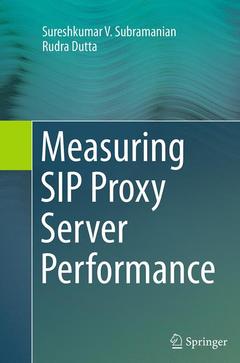Description
Measuring SIP Proxy Server Performance, 2013
Authors: Subramanian Sureshkumar V., Dutta Rudra
Language: English
Subject for Measuring SIP Proxy Server Performance:
Keywords
Proxy Server; SIP; TCP; VoIP; telephony
Approximative price 52.74 €
In Print (Delivery period: 15 days).
Add to cartPublication date: 08-2016
Support: Print on demand
52.74 €
In Print (Delivery period: 15 days).
Add to cartPublication date: 08-2013
191 p. · 15.5x23.5 cm · Hardback
Description
/li>Contents
/li>Comment
/li>
Introduction.- PSTN and VoIP Services Context.- Related Work.- Performance Measurements of M/M/1 and M/D/1 based SPS.- SPS Software Architecture Study.- Measurements and Analysis of M/M/c Based SPS Model.- Performance of the SPS in LAN and WAN Environment.- SPS Performance Overheads with SIP Security.- Statistical Analysis of Experimental Data Sets.- Summary and Future Work.- Appendix.
Proposes new models for the implementation of SIP proxy servers that greatly improve their performance and scale
Highlights applications for session-initiation protocol for video and streaming technologies
Presents real-world industrial case studies that can be used as a benchmark for close comparisons and further optimizations
Includes supplementary material: sn.pub/extras




